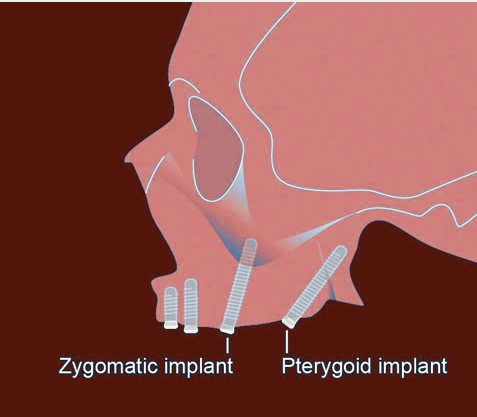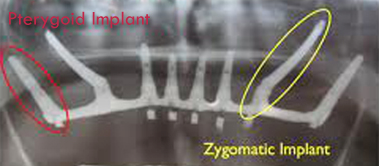Pterygoid Implants

for resorbed Maxilla (upper jaw)
Many patients have been told that they are not candidates for dental implants
The sinus cavity and the rarefied posterior maxillary bone make it difficult to place implants posterior to the first premolar. Pterygoid implants provide a solution for a patient with a severely resorbed jaw bone with minimal surgical trauma and maximum oral function. The pterygomaxillary structures provide stability and support implants , the implant is angled and the apex made to engage either the pterygoid process, the pyramidal plate of the palatine bone, or both. These implants have provided successful support for a complete-arch fixed teeth (prosthesis).
What are Pterygoid Implants / Tuberopterygoid implants ?
Implant placement through the maxillary tuberosity and into the pterygoid plate. Treatment approach can be used in patients with severe maxillary atrophy or following tumor resection.
Implant is placed into pterygoid bone structure to serve as distal abutments (support) for implant prosthesis.

Studies from 1992 to 2009 on patients with atrophic posterior maxilla rehabilitated with pterygoid implants were reviewed. weighted average success of Pterygoid Implants / Tuberopterygoid implants was 90.7%.
